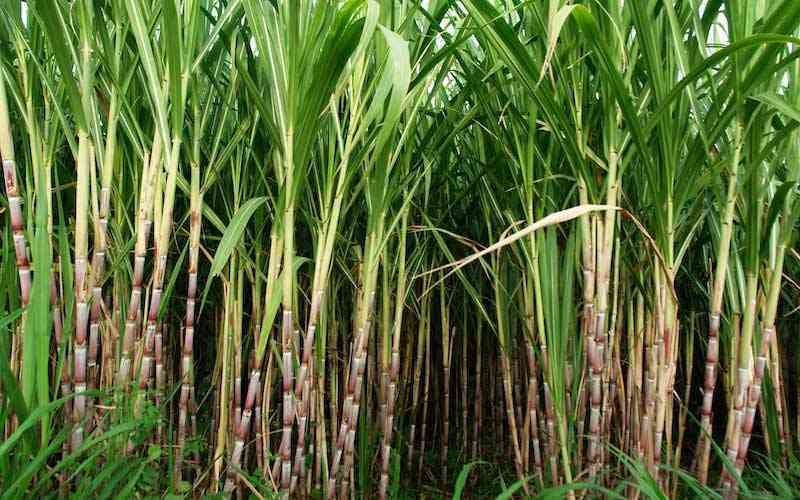
There is a misconception that you can only grow sugarcane in Zimbabwe’s the lowveld.
The reason why sugarcane thrives in the lowveld is that temperatures are high, reaching up to 42 degrees Celsius.
The region is also well supported by huge water bodies for irrigation. but farmers in hot regions like Kariba and Mvurwi could try this crop. Sugarcane remains a high value crop that can be sold on the open market. However, it seems there are very few farmers away from the lowveld who are keen to venture into this crop. About 80% of Zimbabwe's sugar cane is produced by two large estates — Triangle Sugar Estate and Hippo Valley Estates, which are owned by South African-based Tongaat Hulett. Private farmers produce the remaining 20%.These are largely domiciled in Chiredzi.
In the lowveld, the crop is grown under canal irrigation. It is also exported to the United States, East Africa Botswana and South Africa. While the biggest headache would be where to get a mill for farmers away from the lowveld, other selling options must be interrogated.
Easy to grow
Sugar cane is easy to grow and manage. For most of its life cycle, the optimum growing temperature should be around 32°C. After the plant matures, slightly lower temperatures help to increase sugar levels. Frost is dangerous for the crop, regardless of plant growth stages. Keeping an optimal soil moisture level is important, along with the light and warmth to grow healthy crops and obtain a high yield. During growth phases, water requirements are around 1 500 to 2 500 mm of rainfall. This is an average of 25 to 50 mm per week. The preferred relative humidity is at least 50%.
Sugar cane requires good drainage. It grows well in one-meter-deep moist. It does not do well in waterlogged soils. The ground must be well aerated. This means after heavy rains, its pores must be 10% air filled. The optimum soil acidity for growing the crop is 6-6.5 pH. You can still grow sugar cane in more acidic soils, but output may be less. Sugarcane is extremely sensitive to salt.
Soil salinity causes water stress symptoms, such as wilting, leaf burn, slowed growth, which can lead to plant death.
- Mavhunga puts DeMbare into Chibuku quarterfinals
- Bulls to charge into Zimbabwe gold stocks
- Ndiraya concerned as goals dry up
- Letters: How solar power is transforming African farms
Keep Reading
Because sugar cane can absorb nutrients instantly, it needs a lot of organic matter to grow. The plant requires much nitrogen and potassium and less phosphate.
Although growing sugar cane from seed is possible, there are better options for commercial cultivation. You will need to follow instructions on the seed package to have sprouts ready to plant in two to three weeks. To grow sugar cane from cuttings, choose a disease-free mature stock. At least six growth points — circles around the stem — must be cut. It is also worthwhile to remove the top part of the stem. After that, the cutting is ready for planting. You can grow the plan vertically or horizontally. Sprouts should appear within one to three weeks after planting. The best time to plant sugar cane is late summer and early fall, especially in regions with cool winters.
Sugar cane planting techniques are classified as flat, furrow or trench.
Each of these methods is appropriate for specific conditions. Weeds attack sugar cane right after it has been planted and can suffocate young shoots before they grow.
Fortunately for farmers, as the crop grows, it defends itself against weeds by blocking their access to sunlight. However, it is still necessary to monitor the fields’ condition to eradicate weeds as soon as possible.
Fertilisation
To grow healthy sugar cane plants, you will need to provide constant access to nitrogen, potassium, sulphur and, to a lesser extent, phosphorus and zinc. Requirements for various elements change as the crop grows.
Thus, you should accurately calculate the amount and periodicity of fertilising depending on the stage of plant growth.
Farmers are not encouraged to use fertilizer at the wrong time or in excess, as this can cause sugar cane fertilizer burn.
Sugar cane comes in various types, each with its own pests. The most harmful for growing crops are the following pests:
Sugar cane grubs damage the roots of Saccharum spp. crop. Although they are not afraid of chemicals, they can be eradicated by flooding or disking the field. Sugar cane borers infect Diatraea saccharalis. These pests bore tunnels into stems and feed on sugar cane pulp. It is the most dangerous pest, causing a 45% decrease in sugar levels in damaged plants, compared to healthy ones. You can successfully control the spread of borers with insecticides. Wireworms feed on plants’ roots and buds. Insecticides based on pharate can destroy these pests.
- Gwabanayi is a practising journalist and a farmer in his own right. — 0772 865 703 or gwabanayi@gmail.com






